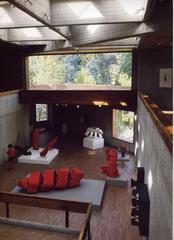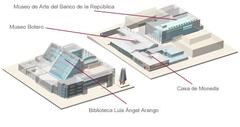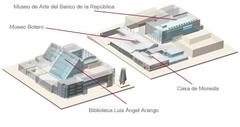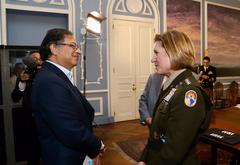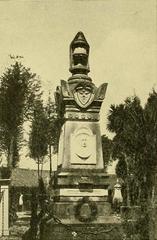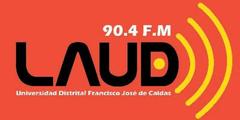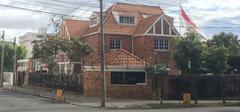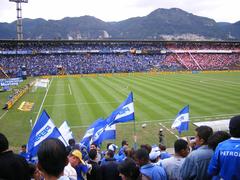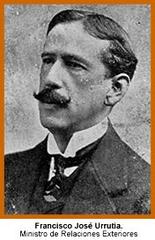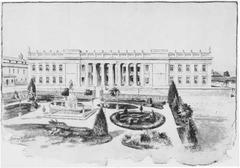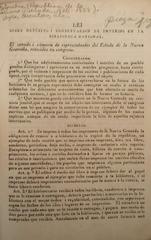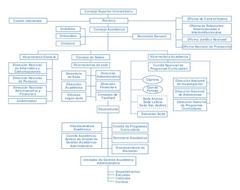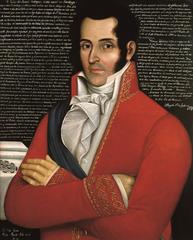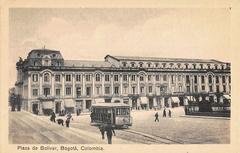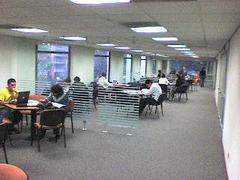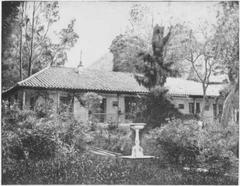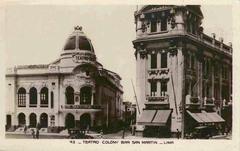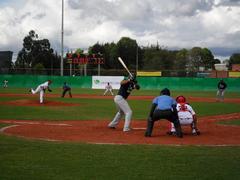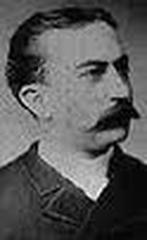
National Museum of Colombia Bogotá: Visiting Hours, Tickets, and Travel Guide
Date: 14/06/2025
Introduction: History and Cultural Significance
The National Museum of Colombia (Museo Nacional de Colombia) is not only Bogotá’s oldest museum but also one of the country’s foremost cultural institutions. Founded in 1823, shortly after Colombia’s declaration of independence, the museum is housed in the Panóptico building—a 19th-century neoclassical structure originally designed as a prison by Danish architect Thomas Reed. The dramatic transformation of this former penitentiary into a museum is symbolic of Colombia’s own journey from conflict to reconciliation.
Within its historic walls, the museum preserves and presents over 20,000 artifacts, tracing Colombia’s story from ancient pre-Columbian societies through colonial times to the modern era. Its extensive collections reflect the country’s rich multicultural heritage, highlighting Indigenous, Afro-Colombian, and European influences that have shaped Colombian identity. The museum’s mission extends beyond preservation; it also fosters dialogue on Colombia’s complex history and its ongoing process of peacebuilding. Conveniently located near Bogotá’s historic La Candelaria district, the museum is an essential destination for anyone interested in Colombian history, art, and culture. (lacgeo.com, Wikipedia, shewandersabroad.com)
Table of Contents
- Introduction: History and Cultural Significance
- Origins and Evolution
- Role in National Identity
- Collections and Galleries
- Architectural Significance
- Visitor Information
- Educational and Social Impact
- Notable Artifacts
- Place in Bogotá’s Cultural Landscape
- FAQs
- Conclusion
- References
Origins and Evolution
The museum was established in 1823 to safeguard the nation’s cultural legacy. Initially housed in the Casa de la Moneda, it moved in 1948 to the Panóptico, whose radial design and sturdy construction create a unique and evocative museum environment. The building itself is an artifact of Colombia’s architectural and social history. (lacgeo.com, shewandersabroad.com)
Role in Colombian National Identity
The museum’s exhibits, spanning from pre-Columbian to modern times, reflect the confluence of Indigenous, African, and European cultures that define Colombia. Its collections and educational initiatives encourage critical engagement with Colombia’s history, including periods of conflict and the ongoing pursuit of peace. (lacgeo.com)
Collections and Thematic Galleries
Pre-Columbian Heritage
Discover ceramics, goldwork, textiles, and stone tools crafted by ancient civilizations like the Muisca and Tairona, revealing their spiritual beliefs and technical prowess. (overyourplace.com)
Colonial and Republican Eras
Explore religious art, colonial furniture, and memorabilia from the independence era, including items linked to key figures such as Simón Bolívar. (lacgeo.com)
Modern and Contemporary Art
The museum features renowned Colombian artists, including Fernando Botero and Alejandro Obregón, whose works illustrate Colombia’s artistic evolution and social commentary. (shewandersabroad.com)
Architectural Significance
The Panóptico is a landmark of neoclassical architecture. Originally a prison, its transformation into a museum symbolizes Colombia’s resilience and renewal. Visitors can still view original cells and iron doors, adding depth to the museum experience. (lacgeo.com)
Visitor Information
Visiting Hours and Tickets
- Opening Hours: Tuesday to Sunday, 9:00 AM to 5:00 PM.
- Closed: Mondays and on certain holidays.
- Admission: General admission ranges from COP 4,000–6,000. Discounts apply for students, youth, and seniors; children under 5 and adults over 60 enter free. Free entry is offered Wednesday afternoons and all day Sunday. (Museo Nacional de Colombia, Nomadic Matt)
Getting There
Located at Carrera 7 N. 28-66, the museum is easily accessible via public transport (TransMilenio), taxi, or on foot from La Candelaria. There is limited parking nearby. (thecrazytourist.com)
Accessibility
The museum is wheelchair accessible. Ramps, elevators, and accessible restrooms are available. Audioguides and some signage are offered in English.
Guided Tours and Events
Guided tours are available in Spanish and occasionally in English. The museum also hosts lectures, concerts, workshops, and rotating exhibitions. Check the official website for schedules.
Photography Tips
Non-flash photography is allowed in most galleries. The Panóptico’s architecture and courtyards provide striking backdrops for photos.
Educational and Social Impact
The museum is a hub for education, dialogue, and reconciliation, offering programs that address Colombia’s social issues and promote cultural inclusion. (overyourplace.com)
Notable Artifacts and Highlights
- Muisca Tunjos: Gold votive figures from pre-Columbian times
- Simón Bolívar’s Memorabilia: Items belonging to the liberator
- Colonial Religious Art: Works by Gregorio Vásquez de Arce y Ceballos
- Modern Masterpieces: Paintings and sculptures by Fernando Botero (lacgeo.com)
Place in Bogotá’s Cultural Landscape
Situated among other major cultural sites—such as the Gold Museum and the Botero Museum—the National Museum anchors the city’s historic district and exemplifies Bogotá’s role as Colombia’s cultural capital. (thecrazytourist.com)
Frequently Asked Questions (FAQ)
What are the visiting hours?
Tuesday to Sunday, 9:00 AM to 5:00 PM; closed Mondays.
How much is admission?
COP 4,000–6,000; discounts for eligible groups; free for children under 5, adults over 60, Wednesday afternoons, and Sundays.
Are guided tours available?
Yes, in Spanish and occasionally in English.
Is the museum accessible for wheelchairs?
Yes, with ramps and elevators.
Can I take photos?
Yes, but without flash in most galleries.
How do I get there?
Easily accessible by public transport, taxi, or on foot from central Bogotá.
Conclusion
A visit to the National Museum of Colombia is an essential experience for anyone seeking to understand the country’s history, art, and identity. Its accessible location, affordable entry, and thoughtfully curated exhibitions make it a must-see among Bogotá’s historical sites. Plan your visit in advance, check the latest schedules, and consider joining a guided tour for deeper insights.
For the latest updates on visiting hours, tickets, and special events, visit the official museum website. Enhance your visit with the Audiala app, offering audio guides and exclusive content.
References
- lacgeo.com
- colombia.travel
- Museo Nacional de Colombia - English
- Museo Nacional de Colombia - Visiting Hours
- shewandersabroad.com
- thecrazytourist.com



